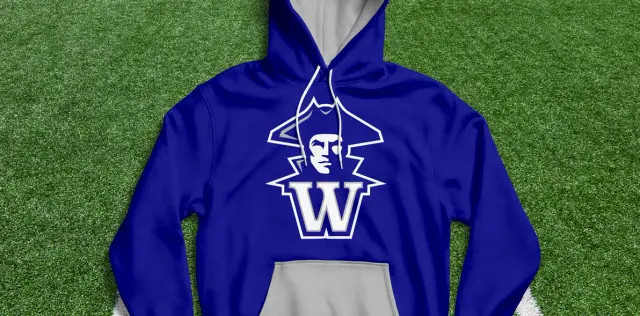School Branding Blog
How School Branding Influences Parent Choice (2025)

Key Takeaways
- 89% of parents start school research online, forming initial impressions within 3-7 seconds
- Visual professionalism accounts for 35% of enrollment impact, more than any other single factor
- Schools with strategic branding see 25-40% increases in enrollment inquiries
- Consistent professional look across your website, signs, and materials builds trust and influences enrollment decisions
- Digital presence quality determines whether families even consider your school
When parents choose a school for their children, they’re making one of the most important decisions of their lives. While academic programs, location, and cost are obvious factors, there’s a powerful influence that often operates below conscious awareness: your school’s brand.
Research in educational psychology and consumer behavior reveals that parents make initial judgments about schools within seconds of encountering their brand materials. These snap decisions, heavily influenced by visual design, messaging, and overall brand presentation, can determine whether a family even considers your school—or immediately eliminates it from consideration.
After analyzing enrollment patterns across 250+ school branding projects, we’ve identified the specific brand elements that most strongly influence parent choice and the psychological mechanisms behind these decisions.
The Parent Decision-Making Journey
Phase 1: Initial Discovery (The 3-Second Rule)
What Happens: Parents encounter your school brand for the first time—usually online Decision Timeline: 3-7 seconds to form initial impression Key Influence: Visual brand elements and immediate credibility signals
What Parents See First:
- Google search results and website preview
- Social media profiles and recent posts
- Online directory listings and photos
- Word-of-mouth descriptions that reference visual identity
Success Example: Henderson Collegiate saw a 40% increase in website engagement after implementing a professional brand identity that immediately communicated academic excellence and innovation. Learn more about how strategic branding drives enrollment growth and optimizing your school website for enrollment.
Schools That Influence Parent Choice
Phase 2: Active Research (The Credibility Assessment)
What Happens: Parents actively investigate schools that passed initial screening Decision Timeline: 2-4 weeks of research and comparison Key Influence: Brand consistency and professional presentation across all materials
What Parents See First:
- Website design and user experience
- Marketing materials and brochures
- Social media content and engagement
- Physical campus appearance and signage
Success Example: Woodbridge School District achieved district-wide enrollment stability after implementing consistent branding that built parent confidence across all schools. Explore our district branding services or read about district vs. individual school branding strategies.
Phase 3: Final Decision (The Emotional Connection)
What Happens: Parents choose between 2-3 finalist schools Decision Timeline: 1-2 weeks of final evaluation Key Influence: Emotional resonance and community connection
What Parents See First:
- Campus visit experience and environmental graphics
- Interaction with branded materials and merchandise
- Staff presentation and professional appearance
- Student pride and engagement with school identity
Success Example: Bridgewater-Raritan High School increased enrollment inquiries by 25% after a complete rebrand that created stronger emotional connection with families. Discover strategic branding approaches for high schools and learn how to build community through branding.
The Psychology of Parent School Choice
Cognitive Biases That Influence School Selection
1. Halo Effect
- Definition: Overall impression influences perception of specific attributes
- School Application: Professional branding creates assumption of academic quality
- Keep It Consistent: Make sure your website, signs, and materials all look professional and match
2. Confirmation Bias
- Definition: Seeking information that confirms initial impressions
- School Application: Strong first impression leads parents to focus on positive attributes
- Brand Strategy: Make positive first impression through strategic brand presentation
3. Social Proof
- Definition: Looking to others’ choices for guidance
- School Application: Visible community pride and engagement influences decisions
- Brand Strategy: Showcase community connection through branded events and materials
4. Authority Bias
- Definition: Trusting sources that appear authoritative and professional
- School Application: Professional presentation builds trust in educational quality
- Brand Strategy: Maintain consistent, professional brand standards across all communications
Emotional Drivers in School Choice
Safety and Security (Primary Concern)
- Visual Signals: Clean, organized brand presentation suggests well-managed environment
- Color Psychology: Blues and greens convey stability and trustworthiness. Learn more in our complete guide to school color psychology
- Portfolio Example: Harmony Community School used calming colors and organized design to communicate safety and care
Academic Excellence (Achievement Focus)
- Visual Signals: Sophisticated, professional design suggests high standards
- Typography: Clean, modern fonts convey forward-thinking approach. Discover how typography builds trust and engagement
- Portfolio Example: Henderson Collegiate used collegiate-style branding to communicate academic rigor
Community and Belonging (Social Connection)
- Visual Signals: Warm colors and inclusive imagery suggest welcoming environment
- Mascot Design: Friendly, approachable mascots build emotional connection. Explore our complete mascot design guide and learn how to bring your mascot to life
- Portfolio Example: Willsboro Central School created a mascot that unified the entire community
Future Success (Outcome Orientation)
- Visual Signals: Modern, innovative design suggests preparation for future
- Brand Messaging: Forward-looking language and imagery
- Portfolio Example: North Central Michigan College positioned itself as preparing students for modern careers
Brand Elements That Most Influence Parent Choice
1. Visual Professionalism (Weight: 35%)
High-Impact Elements:
- Logo Quality: Professional vs. amateur design immediately signals school quality
- Color Consistency: Coordinated colors across all materials build trust
- Typography: Modern, readable fonts suggest contemporary approach
- Photography: High-quality images of students, facilities, and activities
Common Mistakes That Hurt Enrollment:
- Outdated or clip-art style logos
- Inconsistent colors across different materials
- Poor quality or outdated photography
- Unprofessional website design
Success Strategy: Woodbridge School District invested in comprehensive visual identity that immediately elevated perception of all district schools.
2. Digital Presence (Weight: 30%)
What Parents Check Online:
- Website Design: Modern, mobile-friendly site suggests tech-forward approach. Explore our website optimization guide for enrollment-focused strategies
- Social Media: Active, engaging content builds community connection. Read our social media strategy guide for community building
- Online Reviews: Professional responses to feedback show care and attention
- Search Results: Consistent branding across all online platforms
Parent Research Behavior:
- 89% of parents research schools online before visiting
- 67% eliminate schools based on poor website experience
- 54% check social media to assess school culture
- 43% read online reviews as part of decision process
Digital Success Example: Republic School District created cohesive digital presence that increased online engagement by 60%.
3. Campus Environment (Weight: 20%)
Physical Brand Elements:
- Exterior Signage: First impression when families visit campus
- Interior Graphics: Hallway displays and classroom materials
- Athletic Facilities: Branded sports equipment and uniforms
- Common Areas: Cafeteria, library, and office presentation
Environmental Psychology Impact:
- Clean, organized spaces suggest effective management
- Branded elements create sense of pride and community
- Modern facilities imply investment in student success
- Consistent visual identity throughout campus builds trust
Campus Branding Success: Dexter Middle School transformed their environment with strategic branding that increased parent satisfaction scores.
4. Communication Quality (Weight: 15%)
What Parents Read:
- Marketing Materials: Brochures, flyers, and promotional items
- Official Correspondence: Letters, emails, and newsletters
- Event Materials: Programs, banners, and presentation materials
- Staff Presentation: Business cards, name tags, and professional appearance
Communication Psychology:
- Consistent branding builds familiarity and trust
- Professional presentation suggests attention to detail
- Clear, organized information reduces parent anxiety
- Quality materials imply investment in excellence
Demographic Variations in Brand Response
Affluent Communities
Brand Preferences:
- Sophisticated, understated design
- Emphasis on academic achievement and college preparation
- Professional, corporate-style presentation
- Subtle luxury indicators without ostentation
Effective Strategies:
- Use premium color palettes (navy, burgundy, gold)
- Emphasize tradition and established excellence
- Showcase college acceptance rates and academic achievements
- Maintain consistently high-quality materials
Portfolio Example: Bridgewater-Raritan High School appeals to affluent families with sophisticated, achievement-focused branding.
Diverse Communities
Brand Preferences:
- Inclusive imagery and messaging
- Warm, welcoming color schemes
- Emphasis on community and belonging
- Multicultural representation in materials
Effective Strategies:
- Use diverse photography in all materials
- Choose colors that don’t favor specific cultural associations
- Emphasize community support and family engagement
- Show celebration of different cultures and backgrounds
Portfolio Example: Harmony Community School successfully serves diverse community with inclusive branding approach.
Rural Communities
Brand Preferences:
- Connection to local heritage and values
- Emphasis on community pride and tradition
- Practical, no-nonsense presentation
- Strong school spirit and athletic programs
Effective Strategies:
- Incorporate local history or geographic elements
- Use earth tones and traditional color combinations
- Emphasize community involvement and local connections
- Showcase athletic achievements and school spirit
Portfolio Example: Republic School District connects with rural values while maintaining modern appeal.
Urban Communities
Brand Preferences:
- Modern, innovative design
- Emphasis on technology and future preparation
- Dynamic, energetic presentation
- Diversity and opportunity focus
Effective Strategies:
- Use contemporary design elements and colors
- Emphasize STEM programs and technology integration
- Show diverse student success stories
- Highlight college and career preparation
The ROI of Parent-Focused Branding
Quantifiable Impacts
Enrollment Metrics:
- 25-40% increase in initial inquiries
- 15-30% improvement in inquiry-to-enrollment conversion
- 20-35% increase in retention rates
- 10-25% growth in sibling enrollment
Financial Benefits:
- Increased per-pupil funding from higher enrollment
- Reduced marketing costs due to improved conversion
- Enhanced fundraising success from stronger community connection
- Premium pricing ability for private schools
Community Engagement:
- Higher parent volunteer participation
- Increased attendance at school events
- Stronger community support for bond measures
- Enhanced word-of-mouth referrals
Long-Term School Reputation
Reputation Building:
- Stronger community perception and pride
- Enhanced staff recruitment and retention
- Improved media coverage and public relations
- Greater alumni engagement and support
Competitive Advantage:
- Differentiation from other schools in area
- Resistance to enrollment challenges
- Ability to attract families from wider geographic area
- Enhanced partnerships with local businesses
Strategic Brand Implementation for Parent Appeal
Phase 1: Research and Strategy (Month 1)
Parent Research Activities:
- Survey current parents about decision factors
- Interview prospective families about school perceptions
- Analyze competitor branding and positioning
- Review enrollment data and demographic trends
Strategic Planning:
- Define target parent personas and preferences
- Identify key brand messages and positioning
- Develop visual identity strategy
- Create implementation timeline and budget
Phase 2: Visual Identity Development (Month 2-3)
Core Brand Elements:
- Professional logo system that appeals to target demographics
- Strategic color palette based on community preferences
- Typography hierarchy for all communications
- Photography style guide for consistent presentation
Application Planning:
- Website and digital presence optimization
- Marketing materials and communication templates
- Campus signage and environmental graphics
- Staff presentation and professional materials
Phase 3: Implementation and Launch (Month 4-6)
Rollout Strategy:
- Digital presence updates (immediate impact)
- Update brochures, flyers, and parent materials regularly
- Campus environment improvements (visitor experience)
- Staff training and brand adoption
Measurement and Optimization:
- Track enrollment inquiry and conversion metrics
- Monitor parent feedback and satisfaction scores
- Analyze website and social media engagement
- Adjust strategy based on results and feedback
Common Branding Mistakes That Hurt Parent Choice
Mistake 1: Underestimating Visual Impact
Problem: Assuming parents only care about academics and programs Reality: Visual presentation strongly influences perception of academic quality Solution: Invest in professional visual identity that reflects educational excellence
Mistake 2: Inconsistent Brand Presentation
Problem: Your website looks professional but your brochures look outdated—parents notice the inconsistency Reality: Inconsistency creates doubt about school management and attention to detail Solution: Develop comprehensive brand guidelines and ensure consistent application
Mistake 3: Ignoring Digital-First Parent Behavior
Problem: Focusing on print materials while parents research primarily online Reality: Most parent research happens digitally before any physical interaction Solution: Prioritize website, social media, and online presence optimization
Mistake 4: Generic or Outdated Messaging
Problem: Using clichéd educational language that doesn’t differentiate Reality: Parents need clear reasons to choose your school over alternatives Solution: Develop unique value proposition and authentic brand voice
Ready to Influence Parent Choice Through Strategic Branding?
Understanding how branding influences parent choice is just the first step. The real impact comes from implementing a strategic brand system that resonates with your target families and drives enrollment decisions in your favor.
Our school branding strategy service specializes in creating parent-focused brand systems that drive enrollment growth. We help schools understand their parent demographics, develop appealing brand strategies, and implement systems that consistently influence choice in their favor.
See parent-focused branding success:
- Henderson Collegiate - 40% increase in enrollment inquiries through strategic branding
- Woodbridge School District - District-wide enrollment stability through consistent brand appeal
- Bridgewater-Raritan High School - 25% increase in inquiries after parent-focused rebrand
- Harmony Community School - Strong community connection through inclusive branding
- Republic School District - Rural community engagement through heritage-focused branding
Whether you’re struggling with enrollment, competing with other schools, or simply want to strengthen your appeal to families, we can help you create a brand that influences parent choice and drives sustainable growth.
Frequently Asked Questions About School Branding and Parent Choice
How long does it take for school branding to influence enrollment?
Most schools see initial impact within 3-6 months of implementing strategic branding, with full enrollment benefits realized within 12-18 months. Digital presence improvements can show results within weeks, while campus environment changes may take a full enrollment cycle to demonstrate impact.
What’s the ROI of investing in school branding for enrollment?
Schools typically see 25-40% increases in enrollment inquiries and 15-30% improvements in conversion rates after strategic branding implementation. The average ROI is 300-500% within two years when factoring in increased enrollment revenue.
Which brand elements have the biggest impact on parent choice?
Visual professionalism (35% impact), digital presence quality (30% impact), messaging clarity (20% impact), and campus environment (15% impact) are the primary factors. However, consistency across your website, signs, brochures, and materials is crucial for maximum effectiveness.
How do you measure the impact of branding on enrollment decisions?
Key metrics include inquiry volume, inquiry-to-tour conversion rates, tour-to-enrollment rates, online engagement metrics, brand awareness surveys, and overall enrollment growth. Most successful schools track these monthly during enrollment periods.
Can small schools compete with larger schools through strategic branding?
Absolutely. Strategic branding often gives smaller schools significant advantages by highlighting personalized attention, community connection, and specialized programs that larger schools cannot offer. Many small schools outperform larger competitors through focused brand positioning.
Complete Your School Branding Education
This guide is part of our Parent Psychology & Decision-Making content cluster. Deepen your understanding with these related guides:
Core Psychology Guides
- School Colors Psychology: Complete Guide - How color choices influence parent perception and enrollment decisions
- School Typography Psychology - Fonts that build trust and engagement with families
- School Naming Psychology - How school names shape parent perception and brand positioning
- School Logo Design Psychology - Build trust and pride through strategic logo design
Strategic Implementation
- School Branding That Drives Enrollment Growth - Complete strategy guide for enrollment-focused branding
- School Enrollment Marketing Design Strategy - Proven marketing design strategies that drive student recruitment
- School Website Optimization for Enrollment - Turn website traffic into inquiries and tours
Related Pillar Guides
- Complete Guide to School Mascot Design - Master the mascot design process from concept to rollout
- Digital-First School Branding Strategy - Modern branding strategies for the digital age
Need More Help?
Explore our comprehensive school branding glossary for definitions of key terms, check our frequently asked questions for detailed answers, or take our brand assessment quiz to evaluate your school’s brand health.
Ready to transform how parents perceive your school? Get a free parent choice analysis and discover how strategic branding can influence enrollment decisions in your favor.
Related Topics: School Branding 101 · Athletic Program Branding · The Psychology of School Branding
We Build and Manufacture Mascot Costumes
A professionally built mascot costume creates unforgettable moments at games, rallies, and community events.

See Full Details →
Design to Delivery
We manage everything
6-12 Week Delivery
In time for your season
Safety First
Ventilation & visibility
Starts at $2,500
Professional quality
About Mash Bonigala
Mash Bonigala is the Founder & CEO of School Branding Agency. Over the past 15 years, he's helped 250+ K-12 schools transform their brand identity and drive enrollment growth. From charter schools to public districts, Mash specializes in creating mascot systems and brand strategies that rally communities, boost school spirit, and convert prospects into enrolled families. Schedule a Zoom call to discuss your school →




